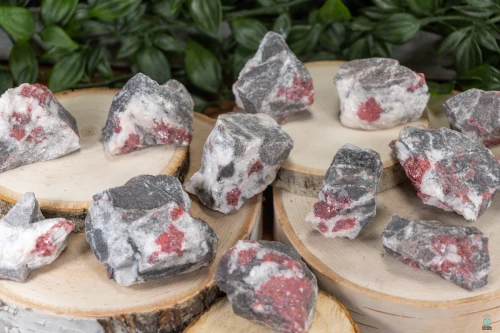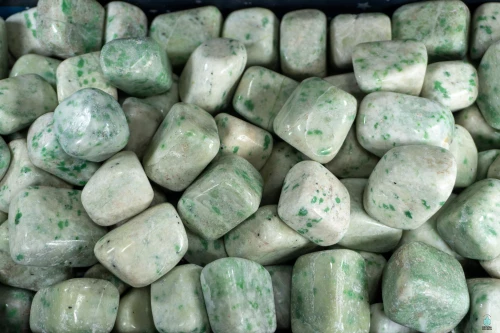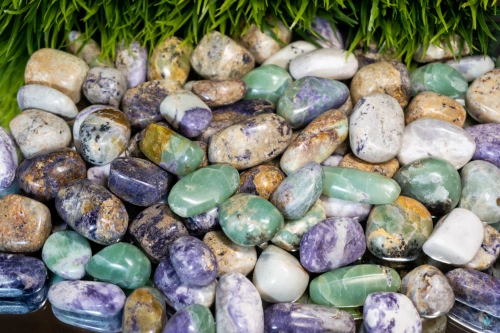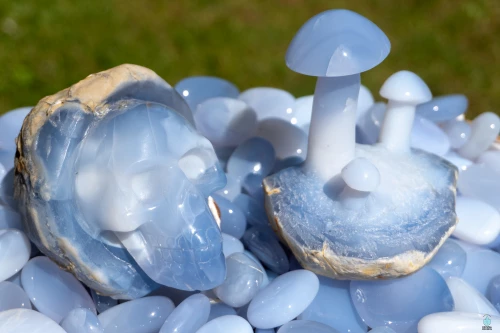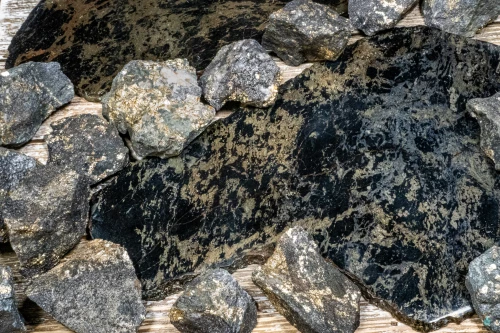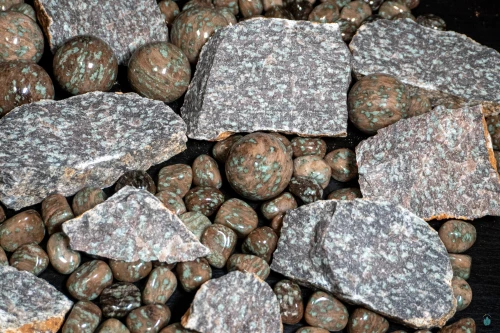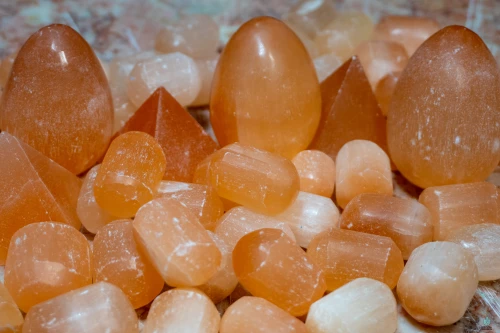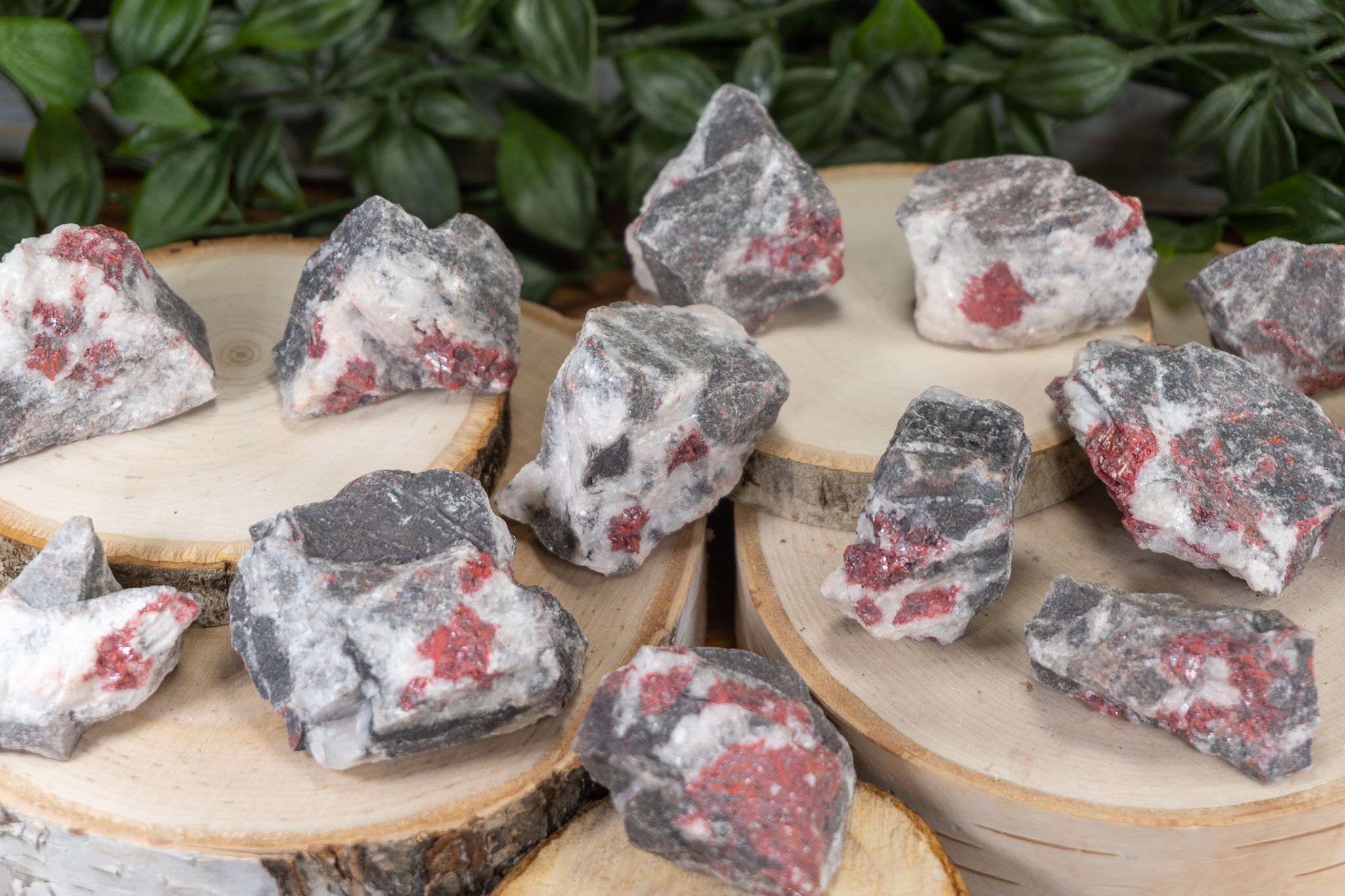
Cinnabar
Science & Origin of Cinnabar
Cinnabar, also known as Cinnabarite, is a mercury sulfide mineral that usually crystallizes in the form of masses, but has been seen in the shape of tabular and rhombohedral crystals on a matrix. It’s the most important ore for extracting natural mercury and therefore is extremely toxic (we still recommend working with Cinnabar due to its amazing transformative qualities, just be careful when touching any part of your body and wash your hands immediately after use). Its color can range from a dull matte red to a crimson or scarlet color and sometimes even as dark as blood. Occasionally on Cinnabar ore one can find tiny globs of natural mercury which settles into crevices of the stone. This is extremely rare and not only adds value to your crystal, but also amplifies the energies it radiates.
Ancient Societies & Vermillion
Cinnabar was formed millions of years ago during heavy volcanic activity that occurred near natural hot springs, as well as epithermal mineral veins. Fast forward to 315 B.C. where it was officially discovered by Theophrastos. He chose to name it after the Persian word “zinjifrah”, which translated to “lost dragon blood”. It had many uses in ancient society and was a common trade item from the East to West. The most notable and historically abundant use of Cinnabar was for a certain color of paint coined “vermillion”. It was used for nearly 2,000 years as an ingredient for paint, sculpting, crafting, decorating, and nearly every aspect of art one can think of. It’s use spanned multiple civilizations such as Ancient Rome, Persia, China, India, and all of Europe during the Middle Ages and Renaissance periods. Although determined to be toxic as early on as the Roman Empire, Cinnabar was still heavily used in makeup, as well as painted on dishes and drinking wear.
Mercury & Toxicity
Cinnabar can be found in all major mercury deposits, with the most famous being the mines in Almaden, Spain. These mercury mines have been used for over 2,000 years, dating back to the early Roman Empire. It’s estimated that over 250,000 metric tons have been pulled out of this mine, with most of the entire world’s supply coming out of it. As of 2002, mercury mining in all of Europe is prohibited. Current active Cinnabar deposits can be found in Egypt, China, Peru, Philippines, Mexico, Kyrgyzstan, and the United States.
Meaning & Energy
Cinnabar is a transformation stone that can push one on an internal expedition of truth, change, and self discovery. It’s potent energies engage our root and sacral chakras, connecting the two and enhancing their external benefits. The attachment to the useless materials around us will cease to exist. All of your remaining life force energy will be turned directly in line with one's true higher self. The path in which you set out on will only become more easily understood as you meditate and tap into Cinnabar’s energy. One will become more in touch with their spiritual body. This will allow our spiritual body to make decisions rather than our clouded minds that are so easily distracted. Another great quality of Cinnabar that one can benefit from is the ability to take control of their actions. This slight change can benefit all aspects of your life, and drastically change the path you take. One’s ability to control themselves, through willpower and determination, will lead them to one of the most powerful abilities of the human mind; manifesting your destiny. This is something no other being on this planet can do, except for you. You are the only true visionary for yourself as no other soul can see, feel or embody the real you. Let Cinnabar’s energy show you the power you have within, through deep meditative sessions that bring to life the “real” you.
*** Just a reminder to thoroughly wash your hands and parts of your body where your Cinnabar was resting. Other than that, no need to worry! Your journey awaits! ***

